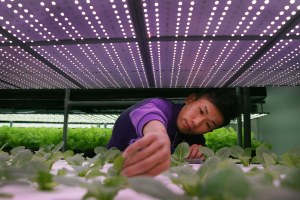Emerging AgTech innovations have the potential to radically improve the sustainability, profitability, and accessibility of US-produced food.
Rapid adoption of agricultural technological (AgTech) innovation is required to meet the future needs of a safe and sustainable US agricultural system that generates more food despite a confluence of obstacles jeopardizing agricultural productivity, while establishing consumer trust to ensure food innovation is accepted by society.
With climate change and growing populations putting increasing pressure on our food systems to produce, farmers and their supply chain partners must find a way to rise to food production challenges through the rapid adoption of technology and scientific innovation. However, a recent history of AgTech innovations that failed to achieve widespread consumer acceptance underscores the importance of consumer buy-in for technical innovation in agricultural production. We need to rebuild consumer trust of new technology in food production, streamline and coalesce processes that expedite innovation, and ensure new innovation is accessible and profitable for growers.
Based on a June 2023 roundtable, the second in a series of regular convenings, the white paper "Bridging the Gap: Accelerating Technology Adoption for Sustainable Food Production" explores the current development, challenges, and potential of emerging AgTech innovations, and concludes with action recommendations designed to remove barriers and expedite the next generation of AgTech integration in US food production.
Related Content

